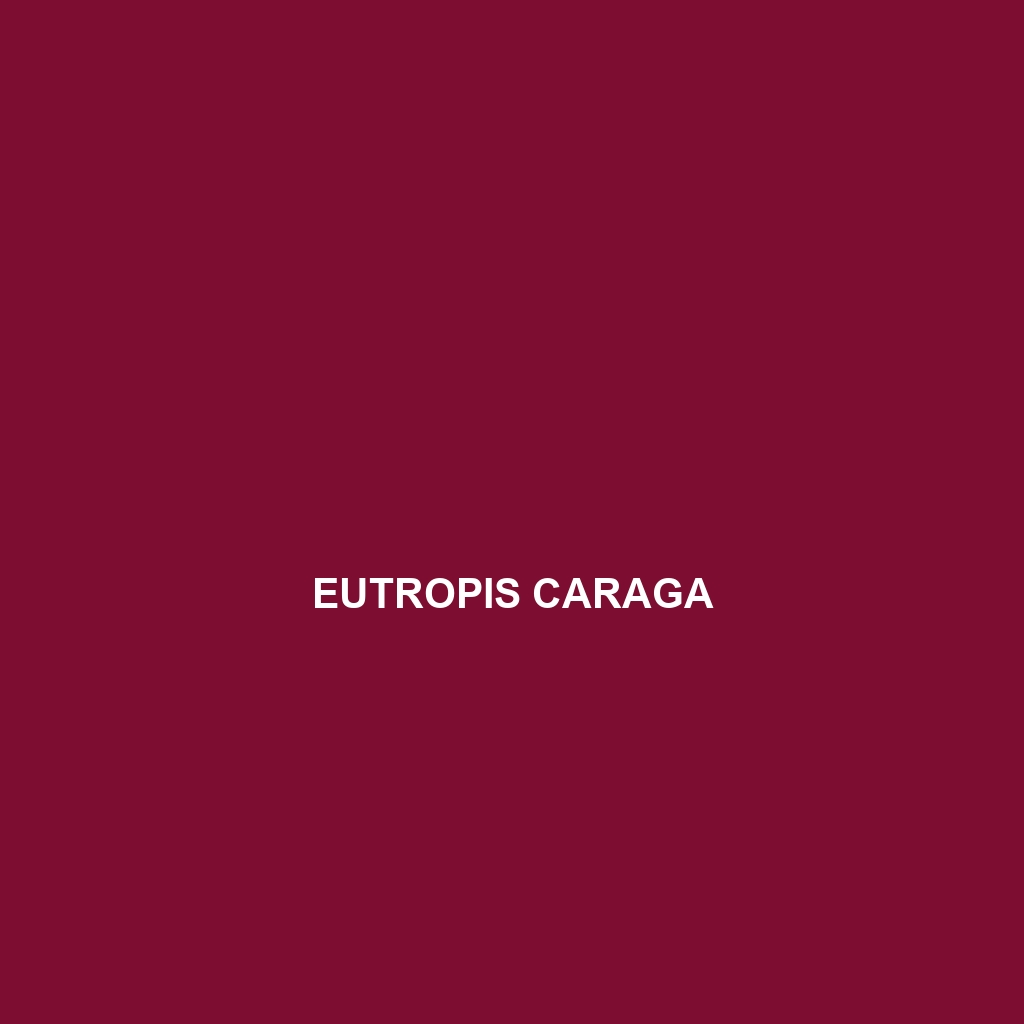Common Name
Eutropis caraga
Scientific Name
Eutropis caraga
Habitat
Eutropis caraga, commonly found in tropical and subtropical regions, thrives in diverse habitats including rainforests, savannas, and temperate forests. This lizard species predominantly inhabits areas with abundant ground cover, such as leaf litter and grasses, where it can easily camouflage from predators. The geographical range of Eutropis caraga spans parts of Southeast Asia, particularly in countries like the Philippines and Indonesia. These habitats average temperatures between 20°C to 30°C and receive substantial rainfall, usually moist enough to sustain the vegetation essential for their daily activities and survival.
Physical Characteristics
One of the remarkable features of Eutropis caraga is its adaptability in size and coloration. Adult individuals typically measure between 15 to 25 centimeters in length. The dorsal side of their bodies is characterized by a vibrant mix of brown and olive hues with distinctive stripes running along their sides; this coloration provides effective camouflage against predators in their natural leaf-littered habitats. They have elongated bodies and a slender, laterally compressed shape, which aids their swift movements. Another distinguishing trait is their relatively long tails, which can sometimes be dropped as a defense mechanism to escape predators.
Behavior
Eutropis caraga is primarily diurnal, meaning they are most active during the day. Observations reveal that these lizards engage in basking—a behavior essential for thermoregulation—during the morning hours. They are generally solitary creatures but display a variety of social interactions, especially during the mating season, characterized by territorial displays. These lizards also exhibit unique habits such as burrowing into soft soil or hiding under rocks or fallen logs to evade danger. While they are not known for long migrations, they may traverse short distances in search of food and mates.
Diet
Eutropis caraga is categorized as an insectivore, with a diet primarily consisting of insects like ants, beetles, and grasshoppers. These lizards have a keen sense of sight, allowing them to detect movement and hunt effectively. Occasionally, they may consume small fruits or vegetation, demonstrating some omnivorous tendencies. Their feeding patterns are opportunistic; they skillfully utilize their environment to catch prey using speed and agile maneuvers, often foraging around foliage in search of their next meal.
Reproduction
The mating season for Eutropis caraga typically coincides with the onset of the rainy season, which provides favorable conditions for raising young. Males engage in elaborate courtship displays, showcasing their vibrant colors and performing physical displays to attract females. The reproductive cycle involves the laying of eggs; females can produce clutches ranging from 5 to 10 eggs, which they bury in moist soil to ensure adequate humidity for incubation. The gestation period extends approximately 60 to 90 days, after which the hatchlings emerge, fully independent and ready to navigate their environment. Parental care is generally absent in this species, as the young are capable of self-sustenance shortly after hatching.
Conservation Status
Currently, Eutropis caraga is listed as Least Concern by the International Union for Conservation of Nature (IUCN). This classification reflects a stable population trend; however, habitat loss due to deforestation and urbanization poses potential threats. Conservation efforts are needed to ensure the sustainability of their natural habitats. While they are not heavily impacted by the pet trade, regional specificities may lead to localized declines, necessitating the protection of their habitats from human activities.
Interesting Facts
One interesting fact about Eutropis caraga is its remarkable ability to change color slightly as a form of communication during territorial disputes or mating rituals, a phenomenon that captivates researchers and reptile enthusiasts alike. Additionally, these lizards can regenerate their tails after losing them, a fascinating adaptation that aids their survival. Another unique behavioral aspect is their ability to climb, allowing them to escape terrestrial predators by using low branches or rocky terrains.
Role in Ecosystem
Eutropis caraga plays a vital role in maintaining the ecological balance within its habitat. As an insectivore, it helps control insect populations, thereby preventing outbreaks of pests that could harm vegetation. Furthermore, it serves as prey for a variety of predators, including birds, mammals, and larger reptiles, thus contributing to the food web. The species also aids in the dispersal of seeds through its occasional consumption of fruits, promoting plant growth in its ecosystem. Overall, the role of Eutropis caraga in its environment highlights the interconnectedness within ecosystems and the importance of each species in fostering biodiversity.
